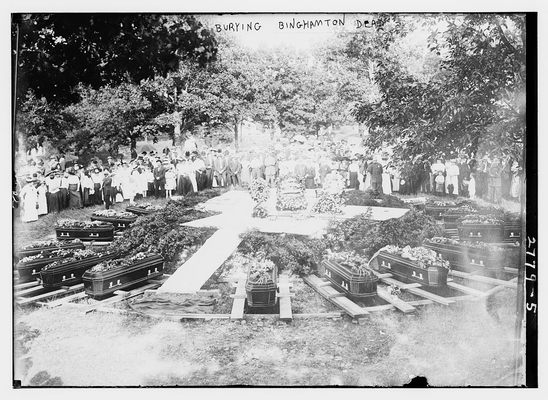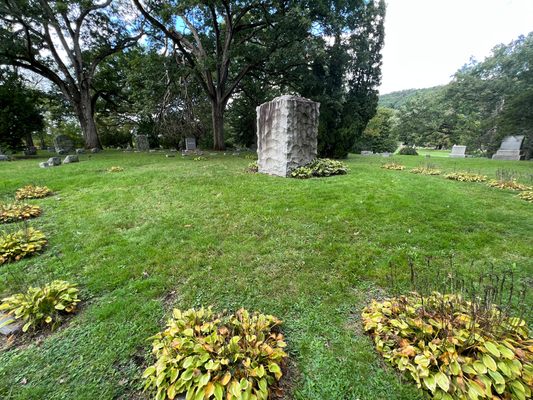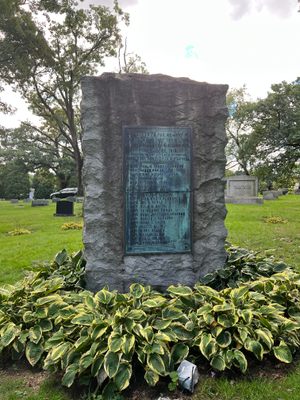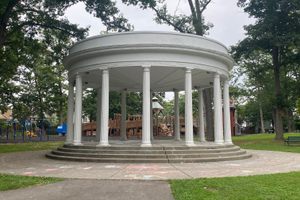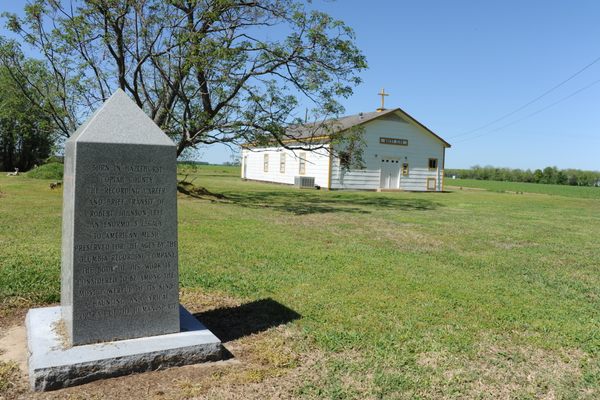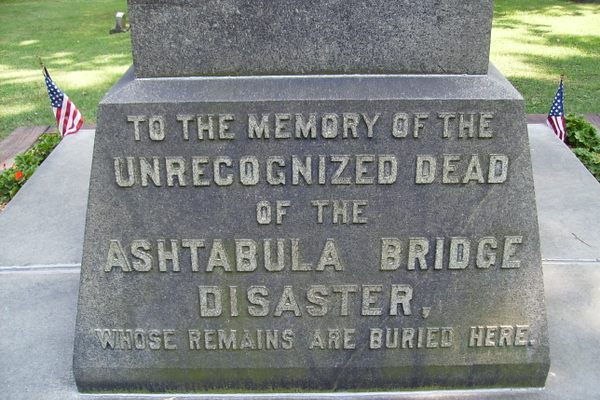About
It was hot the afternoon of July 22, 1913. The fire started after lunch, when a careless worker at the Binghamton Clothing Co. tossed a lit cigarette down a stairwell.
Some of the ladies had stripped to their undergarments due to the increasing heat. Others thought this was another fire drill and refused to leave their work stations until it was too late. Thirty-one employees burned to death in the single greatest loss of life the city of Binghamton, New York has ever seen. Twenty-one of those bodies were too badly burned to be identified.
The victims were interred atop a hill at Spring Forest Cemetery. Unmarked stones mark each grave in a ring around a standing headstone at the center. A copper plaque details the events of the tragedy and lists the names of the unidentified dead. The plaque has turned green and the graves are sunken, but the site is still well-tended and remembered.
Situated between the major cities of Buffalo, Syracuse, Scranton, Boston, and New York City, Binghamton was an important manufacturing hub at the turn of the century. Endicott-Johnson employed up to 20,000 workers. Eastern European immigrants were filling ready-made jobs and houses. Many new Americans knew only one English phrase when they arrived, “Which way E-J?
The Binghamton Clothing factory caught fire two years after the infamous Triangle Shirtwaist fire in Manhattan, during which 146 workers burned to death. After 1913, with mounting pressure on officials, regulations such as regular inspections went in place to protect workers crammed into confined factories.
Related Tags
Know Before You Go
The monument is at the top of the hill on the south side of the cemetery. Enter through the Mygatt St. entrance and bear left through the valley and up the hill. The stones stand in a clearing and are easily visible from the path. Be sure to check out the other expansive monuments and Masonic art around the rest of the cemetery grounds.
Published
October 3, 2016
